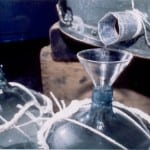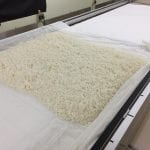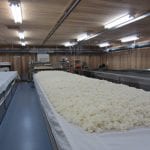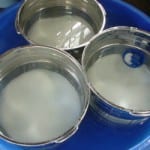Recent stats in the sake world
We all like to talk about how rosy things are in the sake world these days. It continues to grow in popularity and consumption (with caveats as below) both in Japan and around the world. But if we look at some industry statistics, there are plenty of mixed signals.
For example: In a recent one-year period, a whopping 45 percent of all sake breweries did not make money. More correctly, though, they did 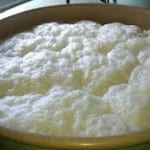 not make money on selling sake alone. Often, family-owned brewing companies have other sources of income, like real estate or shops selling other products, or entire other business operations. As one brewer explained it to me, “our sake brewery is hundreds of years old, so even if it makes no money it functions as a calling-card, a marketing presence for our main business. People want to work with us because we are ‘that old sake-brewing family.’”
not make money on selling sake alone. Often, family-owned brewing companies have other sources of income, like real estate or shops selling other products, or entire other business operations. As one brewer explained it to me, “our sake brewery is hundreds of years old, so even if it makes no money it functions as a calling-card, a marketing presence for our main business. People want to work with us because we are ‘that old sake-brewing family.’”
So while it is surely not optimal for any enterprise to be in the red, it does not mean that 45 percent are about to disappear.
Next, dig this: sake shipments last year were the lowest since 1955. This one shocked me, actually. Sake shipments peaked in 1973 and have been dropping ever since. But to have reached the lowest level in 61 years sounds heavy.
And it is heavy. But check out these facts too. One, futsuu-shu (non-premium sake) comprises about 65 percent of the market. And two, honjozo-shu (barely premium, but good, and actually just suffers from an image problem) is another ten percent. So between these two we have 75 percent of the market, and these two categories are the ones that are dropping. When 75 percent of the market drops at five to seven percent a year, overall numbers head south as well.
 However, clearly premium sake, i.e. junmai and the four types of ginjo-shu, are all growing healthily. Very healthily, in fact, to the tune of six to thirteen percent a year. Naturally, the companies that focus on less expensive non premium sake are more concerned about this reality than those that focus on craft sake. The surge in public popularity of expressive and character-laden premium sake is palpable indeed.
However, clearly premium sake, i.e. junmai and the four types of ginjo-shu, are all growing healthily. Very healthily, in fact, to the tune of six to thirteen percent a year. Naturally, the companies that focus on less expensive non premium sake are more concerned about this reality than those that focus on craft sake. The surge in public popularity of expressive and character-laden premium sake is palpable indeed.
I recently was chatting with a fairly large and traditional distributor in Tokyo about this current state of affairs. The numbers keep going down, I pointed out. “Surely you sell a ton of cheap sake as well as all this premium stuff here in this great shop of yours. Are those numbers not cause for concern?”
He waved that suggestion off with a slow, dismissing shake of the head and pursed lips. “Nah. Junmai-shu and the ginjo types are much more expensive, so the average price per unit is way up. Things continue to head in a positive direction for us,” he asserted. It is all a matter of perspective.
And then there are exports. It was recently reported that last year, sake exports grew yet again, setting a new record for the seventh year in a row. While just over three percent of sake is exported, that small market seems to be growing quite steadily at an average of about ten percent a year.
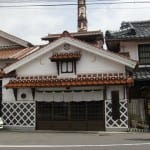 Finally, there was this positive piece of news. The number of active breweries actually grew last year by sixteen, to 1241. In my 24 years in this industry I have never seen the number of breweries actually increase. Of course, I could have just missed it, but to my recall each and every year they have been slowly dropping.
Finally, there was this positive piece of news. The number of active breweries actually grew last year by sixteen, to 1241. In my 24 years in this industry I have never seen the number of breweries actually increase. Of course, I could have just missed it, but to my recall each and every year they have been slowly dropping.
As usual, there is a bit more to the story. There are between 1600 and 1800 brewing licenses out there. Some belong places that do not brew but require license, such as bottling companies and some sake warehouses. So let us say 1700 or so.
And many of these that are actual breweries just ceased operations, yet held on to the hope they could start up again. This could be for any number of reasons, like gathering capital or waiting for the owner inherit to get a bit older, to just waiting for the market to bounce back. But for whatever reason, sixteen breweries restarted operations last year. This, to me, is very encouraging and positive. It made my day, in fact.
So things look good for sake in the years to come, even after wading through the quagmire of statistics that come out almost daily. Indeed, there has never been a better time to get into good sake.





